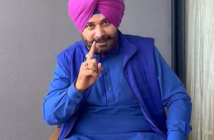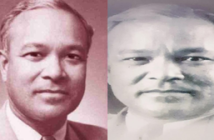New Delhi: India’s Asia Cup selection gives fair indication about squad for T20 World Cup, few spots still up for grabs. India recently announced their squad for the 2022 Asia Cup, which begins on August 27 in the UAE and it gave a fair indication about the players likely to be picked for the T20 World Cup in Australia later this year, with few spots still up for grabs.
India reportedly will have time till mid-September to announce their provisional squad for the T20 World Cup. So, the team management and selectors will certainly keep an eye on players’ performance in the six-team Asian tournament.
The two big names missing from India’s Asia Cup squad are Jasprit Bumrah and Harshal Patel because of respective injuries. Bumrah has some back issues and he should be fit for the mega event but Harshal with a side strain may need a long time to recover.
Among the whole squad, nine players — skipper Rohit Sharma, KL Rahul, Virat Kohli, Suryakumar Yadav, Hardik Pandya, Ravindra Jadeja, Yuzvendra Chahal, Jasprit Bumrah and Bhuvneshwar Kumar — are sure-shot starters in India’s playing XI, when they take the field against Pakistan in their opening game in Asia Cup.
However, a few slots are still open and there will be discussion in the team management about the opposition and playing conditions before finalising their XI. The likes of Rahul and Kohli are also making their return after missing the action in the last one month or so because of various reasons, so it will be interesting to see their impact.
Batting:
The biggest question in the Indian batting line-up is who will open with Rohit Sharma. There is no doubt that Rahul has been one of India’s best openers in the last half a decade but he has played very less number of T20I matches after the last World Cup, which came in November 2021. The right-hander has also been criticised for his slow strike rates.
Post the last World Cup, India under Rohit Sharma have changed their batting approach, bringing in the willingness to risk wickets upfront in search of fours and sixes — something which is opposite to Rahul’s preferred style of batting. In Rahul’s absence, India have tried Ishan Kishan, Surya Kumar Yadav, Deepak Hooda, Shreyas Iyer, Sanju Samson as openers while Virat Kohli has also essayed that role in the past. So, it will be interesting to see whether the 30-year old once again is slotted right at the top order or he bat’s somewhere else.
Given his stature and respectable numbers, Kohli in all likelihood will play at No 3. However, he will have to fight against his struggles against spinners in the middle overs in T20 cricket. In the middle overs, teams look to find boundaries at regular intervals in order to maintain the tempo and Virat has tried to do so but he has got out while playing uncharacteristic shots in the recent past. The star batter will face challenges from quality spinners — Rashid Khan, Wanindu Hasaranga and Shadab Khan — at the Asia Cup.
Suryakumar Yadav is in the form of his life and there should not be any debate about his place at No 4 in the team. At No 5, Pant can be given priority in order to counter the spinners, given that he is the only left-hander in the squad, but he also has some issues in his batting.
Unlike Tests and ODIs, Pant has struggled in T20 Internationals and, despite the repeated failures the management has given him a longer rope, given his destructive ability to tear apart bowling attacks. He was also tried as an opener in T20Is in England and India could use him at the top against opponents that regularly use left-arm spin in the powerplay.
Meanwhile, the likes of Hardik Pandya and Ravindra Jadeja will certainly play because of their all-round ability and can do the finishing job for India, which means there will be no place for Dinesh Kartik, at least in India’s first playing XI, despite doing quite well as a finisher. Karthik’s chance to feature in the XI could come as a replacement if one of the middle-order players gets injured or is severely out of form.
Amid all this, Shreyas Iyer, who has constantly struggled against shot-pitch bowling in the last few months, has lost his place to Deepak Hooda in the 15-member squad in India’s Asia Cup. Hooda made the most of the opportunities and has been equally good against pace and spin, which gives him the flexibility to slot in anywhere in the top six. His part-time off-break also gives India another bowling option.
Bowling:
In an ideal situation, Bhuvneshwar and Bumrah are India’s first two pacers in the playing XI and if Harshal had been fit and available, he would have most likely been the third seam bowling option given his back to back outstanding IPL seasons. He is the leading wicket-taker for India in the T20 format since his debut despite not featuring in all the games.
However, with him not being available, the two leading contenders to replace Harshal are Avesh Khan and Arshdeep Singh, who both now could make it to Australia, one in the final XI and the other as a backup.
Notably, Avesh has been also the standout Indian seamer in the last two seasons of IPL but he has not been able to replicate that performance in the T20Is for India. On the other hand, Arshdeep’s ability to nail yorkers and variations makes him the like-for-like replacement for Harshal. After IPL, the left-hander pacer impressed everyone during his short stint for India.
However, Harshal used to offer something with the bat and in his absence, India will have a long tail consisting of Bumrah, Chahal, Bhuvneshwar and either of Avesh or Arshdeep. Deepak Chahar, who is in the standbys, can fill that void but he will have to do well on the Zimbabwe tour to get back into the main squad.
In the spin department, Jadeja and Chahal are set to play all the matches in the UAE but there will be a competition for the third spin slot. Interestingly, the selectors picked both Ashwin and Bishnoi in the Asia Cup squad, rather than going for another seamer in place of the injured Bumrah.
Ashwin made a comeback to the T20I squad during the last World Cup and since then has done a decent job. He has adapted himself equally well against the right and left-handers, bowling economical spells besides picking crucial wickets. Bishnoi, on the other hand, has an effective googly and is quicker through the air compared to most other Indian spinners. Ashwin’s experience in Australia and his batting ability tilts the selection race in his favour but Bishnoi’s wrist-spin could extract extra bounce on hard Australian wickets, something that would also be on the back of the selectors’ minds.
Overall, India’s performance in the 2022 Asia Cup will give a much clearer picture about their final fifteen for the T20 World Cup. If the team management feel there are some gaps in the squad, they will have the home series against Australia and South Africa to fill that and become a formidable side for the T20 showpiece event.



